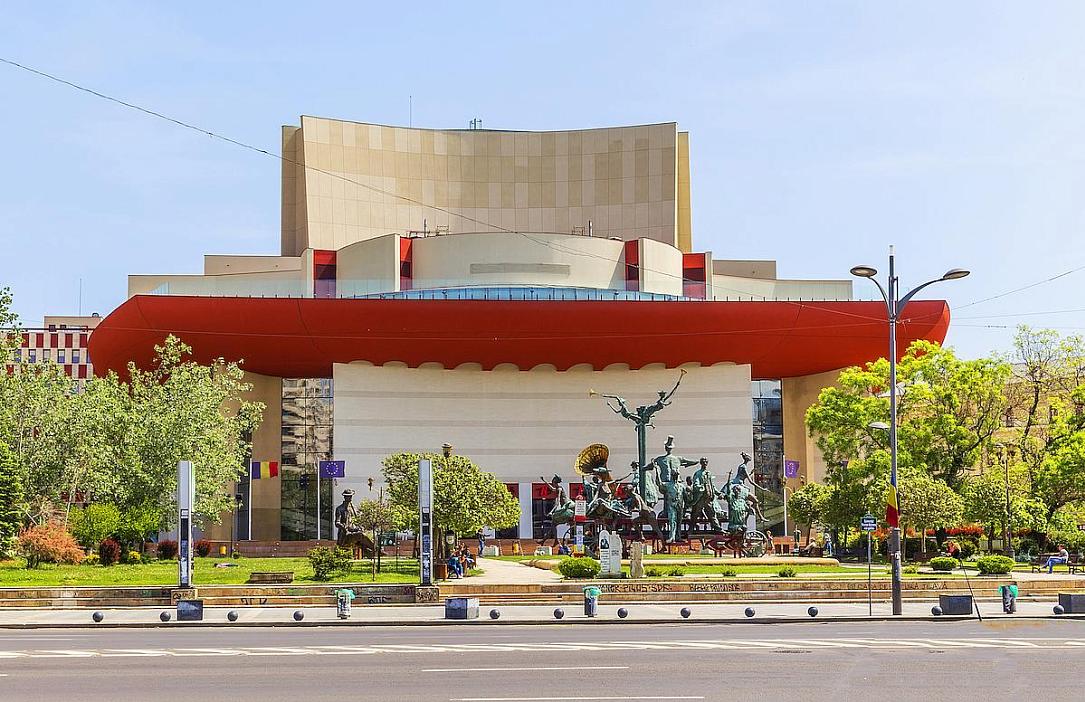This is native content supported by Hotel Cismigiu.
Bucharest Old Town Highlights: The National Theater - Romania’s most prestigious dramatic stage and a true cultural symbol

This is native content supported by Hotel Cismigiu.

This is native content supported by Hotel Cismigiu.

The construction works started in 1848 following the plan of the Viennese architect, A. Hefft. Initially, the theater had the name of the Great Theater, that in 1852 when the inauguration took place and later, in 1875, it became the National Theater in Bucharest. Costache Caragiale was the first director of the theater. He was the uncle of famous Romanian playwright Ion Luca Caragiale, whose name was given to the National Theater a century after the inauguration.
The Baroque theater building on Calea Victoriei was considered a landmark of the cultural life in Bucharest until August 1944, when the theater was bombed by German aviation during a mission in the World War II, that aimed to destroy the Telephony Palace (“Palatul Telefoanelor”), a neighboring building.
After the bombing that destroyed the building on Calea Victoriei, the theater continued its activity in other nearby halls named Comedia (Majestic), Studio in Amzei Square, festivity halls of high schools Sfântul Sava and Matei Basarab, and the Military Circle (“Cercul Militar”) building.
The hat-shaped form of the building, which reminded many of "Caragiale's hat", was the reason why the former communist dictator Nicolae Ceausescu requested the remodeling of the building in 1978, after the fire that destroyed the great hall. His demand for a classical form, forced architects to design a shell to cover the hat. Once the new changes followed, a new hall was built: the Amfiteatru Hall.
After the Revolution, many voices called for the return to its original form. And the idea came in 2002 after a seismic study showed that the structure of resistance was weakened by the "housing" added by Ceausescu. The theater needed consolidation.
And so, the National Theater in Bucharest was once again revamped and consolidated starting 2011. Following these works, TNB’s façade returned to its original form – the one before the remodeling works of the communist era - and the number of halls increased to seven, including an open-air hall. Furthermore, the Great Hall regained its original form, with the official lodge ordered by Nicolae Ceauşescu being removed from the plan.
The new National Theater was inaugurated in November 2014 and the first show was staged a few months later in April 2015.
The National Theater has been and will remain a true cultural symbol of national importance, a cultural institution that has helped form many generations of actors over the years.
The theater has an open-air amphitheater on the rooftop and is open for the public from May to September. The venue hosts a variety of performances, from theater and dance to jazz, rock or folk concerts, film screenings or meetings with artists.
Also, the National Theater organizes guided tours inside the theater through the new spaces, the tickets can be found both online and at the Ticket Agency, in the hall of the Great Hall.
The I.L. Caragiale National Theater is located in the center of Bucharest, in Universitate Square, a short walk from Hotel Cismigiu. The nearest subway station is Universităţii Square, and the buses that have nearby stations are 137. 336. 601. 381. The express bus 783 also stops in Universităţii Square.
This is native content supported by Hotel Cismigiu.